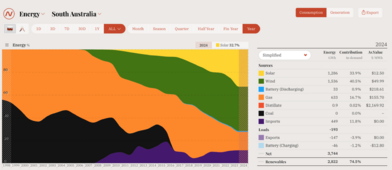The only thing you can't curtail is rooftop PV. (to be curtailable in the future.)
Of course, probably have to keep a certain percentage of rotating generation on line for stability and regulation.
The state's push forward on both fossil fuel and renewable plants has led to excess power — and energy that goes to waste.

www.latimes.com
If Arizona curtailed PV, it was probably utility scale plants, because they could get the same power from California, only with cash in addition.
"The number of days that California dumped its unused solar electricity would have been even higher if the state hadn’t ordered some solar plants to reduce production — even as natural gas power plants, which contribute to greenhouse gas emissions, continued generating electricity."





